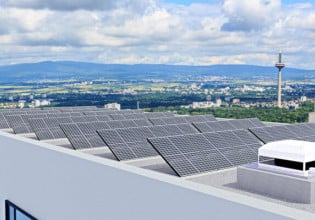An Introduction to Energy Storage Systems
This article introduces each type of energy storage system and its uses.
The first electrical energy storage systems appeared in the second half of the 19th Century with the realization of the first pumped-storage hydroelectric plants in Europe and the United States.
Storing water was the first way to store potential energy that can then be converted into electricity. Pumped-storage hydroelectric plants are very important for electrical systems, as they accumulate energy in periods where the demand is low and give back the energy stored once the demand increases.
Figure 1. An example of hydroelectric pumping. Image courtesy of Andritz.
Unfortunately, demand changes are not always easily predictable and sudden changes could create problems in electrical systems. Furthermore, the continuous growth of renewable energy generators requires new regulations and methods of control.
The Main Types of Energy Storage Systems
The main ESS (energy storage system) categories can be summarized as below:
Potential Energy Storage (Hydroelectric Pumping)
This is the most common potential ESS — particularly in higher power applications — and it consists of moving water from a lower reservoir (in altitude), to a higher one. This is done when the energy demand is low, in order to store potential energy and then release the water from the top reservoir, in order to generate electricity when the energy demand is higher.
This kind of ESS requires particular geographic features to be installed.
Electrochemical Energy Storage (Batteries)
This kind of storage system is based on chemical reactions associated with the elements used to manufacture the battery. The common battery is composed of cells, with two electrodes (anode and cathode) and an electrolyte. Chemical reactions within the battery provide the electromotive force required for the flow of electric current.
Mechanical Energy Storage (Flywheels, CAES)
This category of ESS is suitable for applications with low-to-medium power (from ten kW up to a few MW). A flywheel stores kinetic energy and then converts it into electricity, while CAES (compressed-air energy storage) stores energy by compressing air into tanks.
Electrostatic Energy Storage (Capacitors, Supercapacitors)
This category is quite common, particularly in electronic devices or for electric mobility applications. It works by storing energy through electrostatic charge in a capacitor made by two metallic plates separated by a dielectric. Supercapacitors are advanced capacitors that can store significantly more energy relative to volume or mass.
Nowadays, due to easier installation, low construction time, and the wide range of possible applications, the most promising category of energy storage systems is the electrochemical category. It can be used both for high-power and high-energy applications, it’s quite small when compared with other types of energy storage systems, and it can be integrated with existing power plants.
Power Performance vs. Energy Performance
It is very important to choose and design each type of ESS according to the specific application it is intended for. There are several possible applications that electric energy storage systems can work with. These applications are differentiated by two main categories: those that require large amounts of energy in the long term, and those that require high power, i.e., high rates of energy transfer.
Capacitors and supercapacitors, for example, provide effective energy storage for high-power applications, and hydroelectric pumping is suitable for applications that require larger amounts of energy delivered at lower rates
In the next article, we will look at electrical networks and energy storage system applications.







